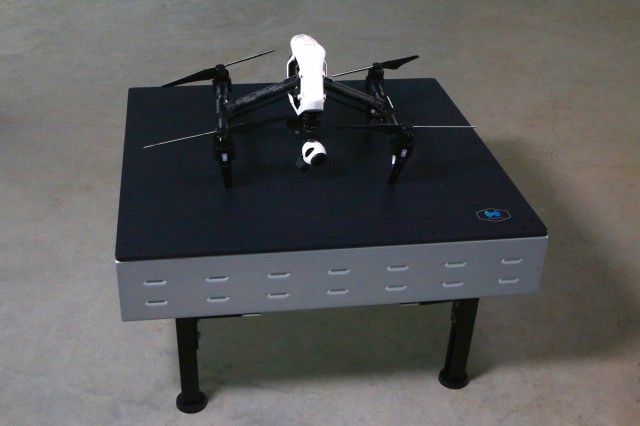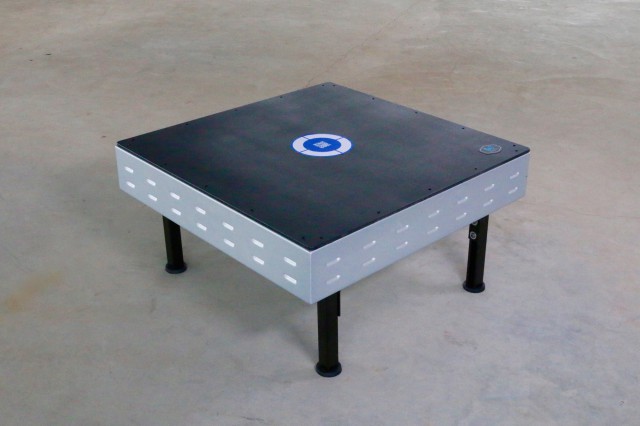, a provider of wireless power and battery intelligence solutions for the robotics industry, has announced WiBotic PowerPad, a completely integrated wireless charging pad for drones. Designed for the many drone operators who don’t want to develop their own wireless charging pad, WiBotic PowerPad contains the WiBotic transmitter circuit, transmitter antenna and power supply in one ready-to-go unit.
The current version measures 3ft by 3ft and can support a wide variety of drones today, from large industrial UAVs to smaller commercial and enterprise drones. Additional standard sizes will be available in the future.
WiBotic PowerPad works in conjunction with the separate WiBotic onboard charger – a small circuit board and antenna that easily mounts on the drone itself. Weighing only 46 grams (1.6 ounces) and measuring 70mm(l) x 48mm(w) x 17mm (h) (2.75” x 1.89” x .67”) the mini circuit board and associated antenna are simple to integrate into any drone. With the lighter onboard charger, operators of smaller drones and robots can take advantage of all the benefits of wireless power without being bogged down by excess weight.
“Battery charging is one of the biggest challenges facing the robotics industry and reliable wireless power has opened a world of fabulous possibilities,” said Ben Waters, CEO of WiBotic. “The new lightweight and compact WiBotic onboard charger makes it possible to integrate reliable wireless charging into nearly all sizes of drones, opening up those possibilities to a much wider range of drone applications.”
WiBotic software can be used to configure and optimize the charge rate for any battery onboard the drone. Once configured, the drone simply lands on the wireless charging pad and gets charged with no human intervention needed.

WiBotic PowerPad can be easily mounted on everything from rooftops and other elevated structures to inside warehouses and factories. Wireless power is useful in countless industries such as security where drones on rooftops must be at-the-ready to investigate alarms; oil and gas where drones can be used to monitor and detect gas leaks; or in warehouses where drones can be used to efficiently manage inventory.
One WiBotic PowerPad can support multiple drones, or one drone can land on multiple pads to extend its flight range. The wireless charging pad and related components enable drones to work completely autonomously, potentially for the lifespan of their batteries. There is no longer a need for human intervention for routine maintenance, charging or manually changing out batteries. In addition, because WiBotic PowerPad is completely integrated into a closed unit, companies don’t have to worry about physical charging connections wearing out, exposed live electrical contacts or environmental conditions that can impact contact-based chargers.
WiBotic PowerPad has a powder coated aluminum body and plastic lid for durability and corrosion resistance. It is also weather resistant, and fully weatherproof options can be custom-manufactured for companies with that requirement. Custom-sized versions can also be designed based on specific customer needs.
“WiBotic works with drone operators and service providers in many industries, and almost all of them have experienced the time and financial burdens of manually recharging batteries,” said Ben Waters, CEO of WiBotic. “WiBotic PowerPad is an easy solution for autonomous charging and enables them to quickly experience the maintenance reductions and cost benefits of wireless power.”
“WiBotic wireless charging technology is a key component in the AERO integrated aerial enterprise and the WiBotic PowerPad performs beyond our expectations,” said Joel Ratner, director of the Innovation Lab at AERO Corporation. “And we couldn’t ask for a better development partner; the support our team has received from WiBotic is exceptional.”
Source: Press Release

